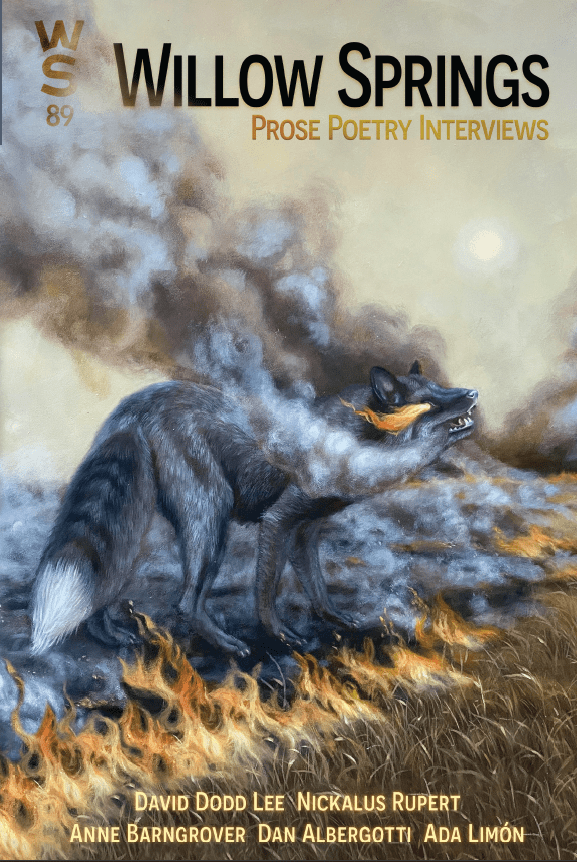
Found in Willow Springs 89
Back to Author Profile
1
Darkness permeates these poems
as though each constituent word
was derived or descended from
the Latin or Old Norse for
death, grief, loss,
discouragement. No matter how beautiful
the poem’s subject
—early twilight with chimney smoke rising
vertically into crystalline air,
or at first light along the river,
birch and aspen branches sketched
in hoarfrost—a bleakness
is subsumed: the perilous layer of ice
created by a freeze/thaw cycle
hidden beneath
the snow covering the road.
2
Despite the glacial air, and windchill,
the poems spend much time outside:
snow must be removed
from the laneway to the house
that shelters these words, to ensure a connection
to highway and town. Paths
to shed and barn need to be excavated
through the drifts. Wood used for the furnace
that heats the poems’ dwelling
must be wheelbarrowed into the basement
from tarped stacks. Ski and snowshoe trails
can be followed across meadows and
forested slopes. Yards can be flooded
or ponds found on which
skating rinks are fashioned.
Indoors, as the day starts to falter
before the afternoon has hardly settled in,
the slow descent of the minutes
the poems experience
matches the steady deliberate snowfall
which accompanies evening’s arrival.
Each moment within these rooms
weighs more than an instant’s size
would suggest: its mass,
dense as a neutron star,
contains a particle of solidified time
at its core. For a poem to speak amid
such heaviness is wearying. Also, the warmth
that buffers the poems against
the night beyond the walls
is soporific. Even desk and chair
urge the poems to sleep, sleep.
The book falls from the hand
to the blanket, the light
goes out.
3
The poems know much about
their season: how snow
vanishes from the boughs of spruce and pine
at two degrees above freezing. How smoke
streaming southward from the houses
means deeper cold is coming.
How a stretch of asphalt
shadowed by cutbank or thick grove of cedar and fir
is most prone to be slippery.
How an austere beauty
is difficulty’s true reward.
How to live
as though spring will never reappear.
4
Whatever the poems say,
chickadee and pine siskin within them
mob the suspended bird feeder.
Ravens complain as they
flap strenuously above the house
or a summit ridge.
An eagle perches
just below the top of a hemlock
and thinks
or floats high over the white forest
of a valley wall. At dawn
or when dusk begins to infiltrate the afternoon,
wisps of fog
lift from the river’s surface.
Mist can also fill the day:
behind the closest fir and spruce,
flat jagged tops of other evergreens
recede in rows to invisibility.
5
After the tumult of dreams:
the bedroom calmed by
morning snowlight.
After the tumult of spring,
summer, fall:
winter.
6
These poems’ subtext
is a valley that twists between range after range
of cedars and firs, each green bough
bearing the white mark of the season.
Rock faces are scored by
columns of frozen water
alongside ledges that support
mounds or skiffs of snow.
This landscape utters a single trumpet’s
wail—plaintive, dreamy, lingering—
a sound that threads through
the myriad notes of gently lowering
flakes.
Yet anything done in winter
mars snow’s perfection.
Sound of the plow truck
scraping the night; tracks of a rabbit
that skirts the house unseen.
Roof shingles exposed
closest to the chimney; icicles
daggering down from the eaves.
Sand mixed with salt on the roads
so a world built for
the absence of snow
can continue, can pass by.
7
The poems are convinced
winter is poetry’s season.
Soon poems will take shape, however,
that have never known a winter.

